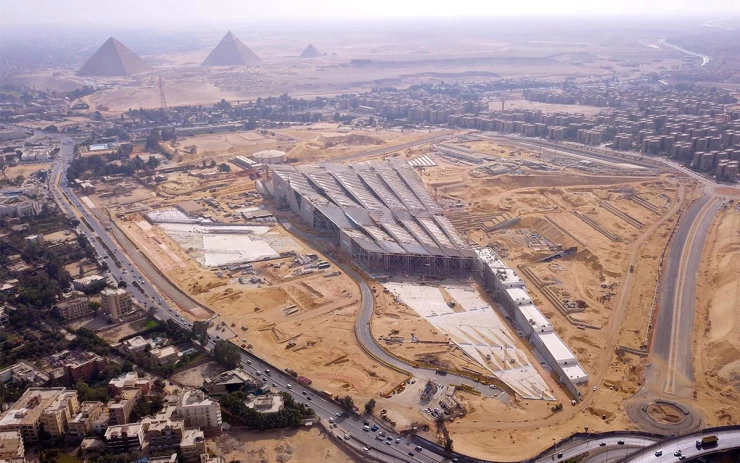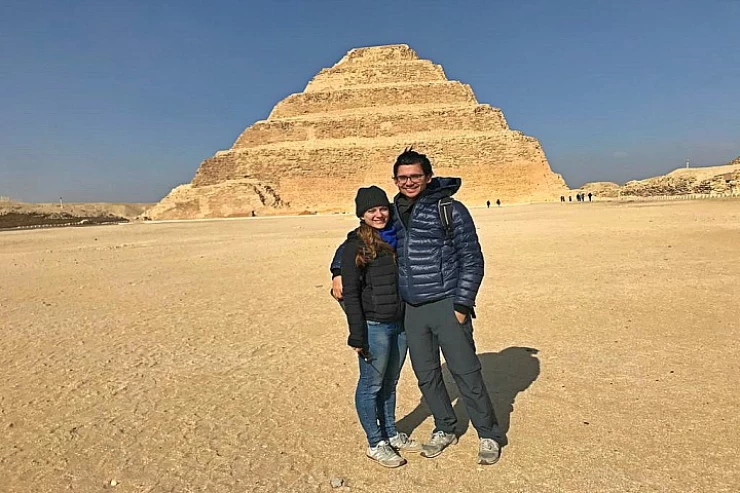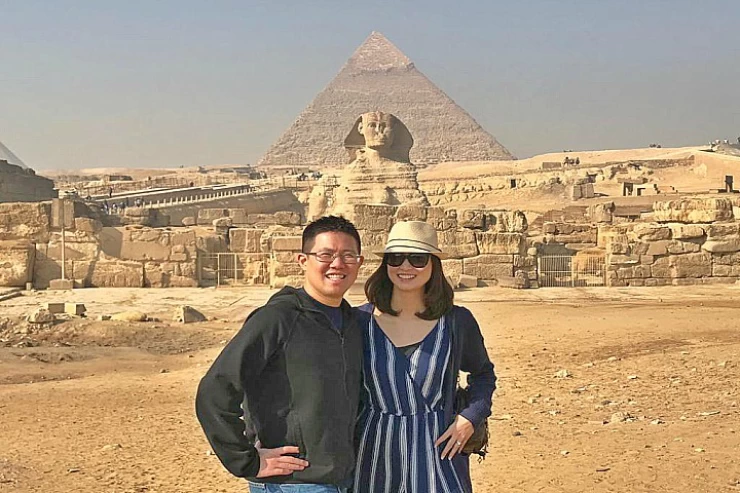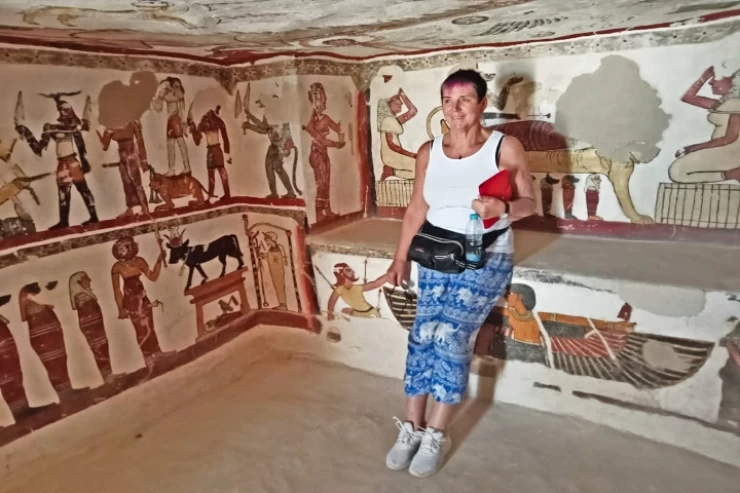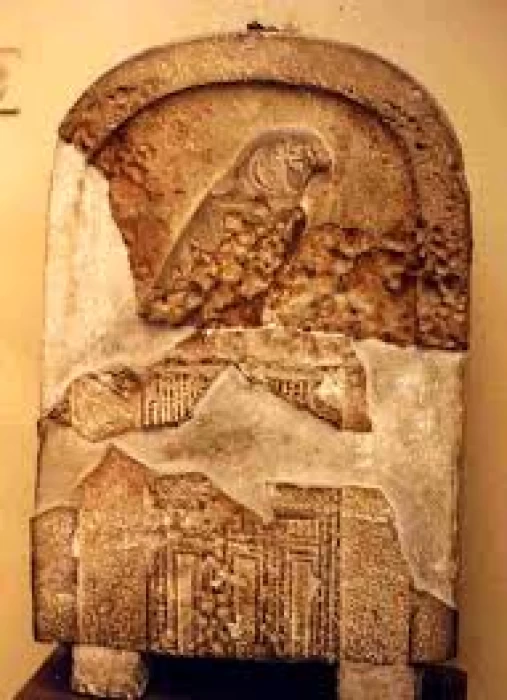
King Djer | Kings of Egypt
King Djer | Kings of Egypt
The Early Archaic Dynastic Period of Egypt's Dynasty I included Dyer as its third pharaoh. About 2980–2941 B.C., Dyer was king. First was Narmer, followed by Dyer's father Hor-Aha as the first two pharaohs of this first dynasty I of the ancient empire.
The Palermo Stone lists the first 10 years of Djer’s reign, which lasted 57 years as a king. If the reconstruction of the Annals Stone based on its different fragments is correct, the reign of Djer may have lasted up to 41 years. Djer was buried in a fairly elaborate tomb at Umm el-Qa’ab.
Of the events of Djer's reign, only a few facts that are quite unrelated to each other are known. The Palermo Stone reports of a "massacre of the Setju", a term that indicates the Asians, a stele discovered in Gebel Sheikh Suleiman, in Nubia, and now preserved in the museum of Khartoum, attesting to a raid while other sources report an expedition in Sinai.
Like the other rulers of the first dynasty, he was buried in the cemetery of Umm el-Qa'ab near Abydos. From the 18th dynasty, his tomb was worshiped as Osiris' tomb. Egypt offers tourist sites that will remain engraved in your memory after a visit among which Egypt Tours remains the best in organizing trips to the Pharaonic land.
the reign of King Djer was characterized by the strong, the king's power in political life. All these things made Djer create some developments in the economy, and he built a tomb at Abydos. scientists have discovered that he had two tombs at Saqqara and Abydos, and he also participated in the attacks against Nubia with his father Aha, The history of Egypt is rich with outstanding characters represented in many books. Hence, a visit to Egypt is the best option to discover all this.
King Djer: The Early Pharaoh of Ancient Egypt's First Dynasty
King Djer, one of the prominent rulers of Egypt's First Dynasty, played a significant role in laying the foundations of one of the world’s oldest civilizations. His reign, believed to have spanned around 41 years (c. 3000 BCE), left a lasting legacy as he strengthened the unity of Upper and Lower Egypt and enhanced the early structure of the ancient Egyptian state.
The Early Reign of King Djer
King Djer ascended the throne following the reign of his father, King Hor-Aha, and continued the work of consolidating Egypt’s territories. As a successor to Egypt’s first dynasty, Djer ensured that the ideals of centralized rule and divine kingship remained deeply entrenched. His reign marked a period of stability and expansion, setting the stage for future pharaohs to thrive.
Djer’s name, inscribed on the Abydos King List, reflects his significant contributions to the unification of Egypt. Historical records suggest that his rule emphasized religion, administration, and military conquests, ensuring the continued growth of the kingdom.
Djer’s Contributions to Religion and Culture
King Djer is often associated with strengthening Egypt's spiritual practices. Under his rule, the Egyptians further developed the concept of kingship as a divine institution. The pharaoh was not merely a political leader but a living representation of Horus, the falcon god.
The discoveries in Abydos, where Djer's tomb is located, provide fascinating insights into the funerary practices of early dynastic Egypt. His burial complex reflects a blend of religious rituals and a belief in the afterlife, which became a cornerstone of Egyptian culture. Excavations revealed subsidiary burials of servants and retainers, suggesting that the practice of human sacrifice was present during this period, likely as a means to serve the king in the afterlife.
The Tomb of King Djer
King Djer’s tomb, located in the royal necropolis at Abydos, is among the oldest and most significant archaeological sites in Egypt. Identified as Tomb O, it is a massive structure consisting of multiple chambers and surrounded by burial pits. This tomb reflects the early architectural styles and rituals of dynastic Egypt, which influenced later pyramid-building traditions.
Interestingly, some scholars believe that Djer's tomb may have been considered an early cenotaph for Osiris, the god of the afterlife, by later generations. This connection highlights the cultural and religious importance of Djer’s reign even centuries after his death.
Military Campaigns and Expansion
King Djer’s reign was marked by military activity aimed at protecting Egypt’s borders and expanding its influence. Records from this era hint at campaigns into Nubia and the Sinai Peninsula, ensuring control over valuable trade routes and resources like copper and turquoise. These expeditions not only secured Egypt’s economic stability but also established its dominance in the region.
Legacy of King Djer
King Djer’s contributions to the development of early Egypt cannot be overstated. His reign laid the groundwork for a civilization that would endure for thousands of years. By consolidating the duality of Upper and Lower Egypt, emphasizing divine kingship, and expanding Egypt’s borders, Djer ensured that the First Dynasty became a golden age of innovation and progress.
While much of his reign remains shrouded in mystery, archaeological discoveries continue to shed light on his life and achievements. King Djer’s rule stands as a testament to the resilience and ingenuity of ancient Egypt during its formative years, marking him as one of the pivotal figures in its storied history.
Conclusion
King Djer was not just a ruler; he was a pioneer of ancient Egyptian governance, religion, and culture. His reign laid a strong foundation for future dynasties, ensuring the continuity of a civilization that would amaze the world for millennia. Whether through his military conquests, religious influence, or architectural innovations, King Djer’s legacy continues to resonate as a symbol of early Egypt’s greatness.







